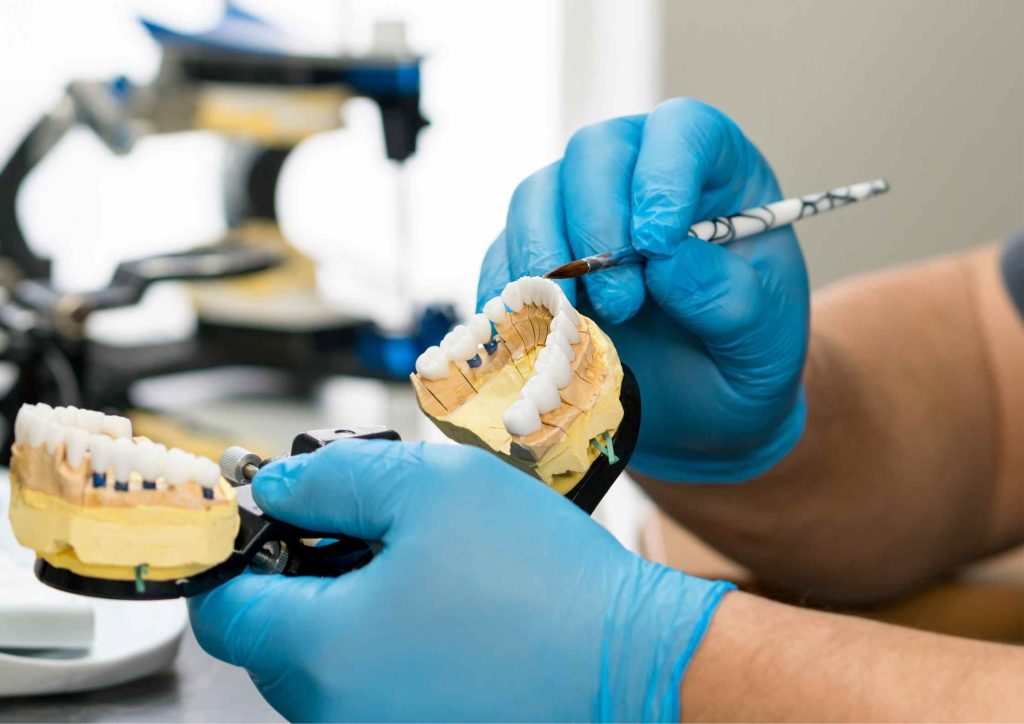Dental problems are a common concern many of us face at some point in our lives. Whether it’s a pesky cavity, a cracked tooth, or structural damage, these issues can impact our oral health and overall well-being.
When it comes to restoring damaged teeth, the options of tooth fillings and dental crowns often come into play. Understanding the differences between these two procedures is crucial for making the right choice for your dental needs.
In this comprehensive guide, we’ll explore the scenarios where tooth restorations are necessary. We will delve into the benefits of fillings and crowns, walk through the procedures involved, provide a comparative analysis, and offer tips for maintaining oral health on a budget.
Dental problems like cavities, cracks, and structural damage can undermine the health of our teeth. Addressing these issues is essential to prevent further damage or complications.
Example: Ignoring a small cavity can lead to more significant problems that might require more extensive treatment. You can save yourself from unnecessary pain and expense by seeking early intervention.
When tackling minor cavities and restoring small areas of decay, tooth fillings are like the superheroes of the dental world. These little wonders play a big role in keeping your teeth healthy and strong.

Cavities are like tiny holes appearing on your teeth’ surface when bacteria and sugars team up to create trouble. Tooth fillings step in to save the day by filling up these holes.
Dentists remove the damaged part of your tooth and then use special materials to patch it up. It’s like giving your tooth a brand-new shield against further decay.
One of the coolest things about fillings is that they help keep your tooth looking and feeling natural.
Instead of removing a big chunk of your tooth, dentists only take away the damaged part. This means more of your real tooth stays intact. It’s like fixing a small crack in a vase instead of making a whole new one!
Getting a tooth filling is a much simpler process compared to dental crowns. Since the damage is usually minor, the dentist doesn’t need to do a lot of drilling or shaping. That means less time in the chair and less discomfort for you.
Plus, your tooth returns to its usual job of biting and chewing faster.
Imagine dental crowns as the heavy-duty superheroes for teeth that need a bit more saving. When your teeth face serious damage or structural issues, these crowns swoop in to save the day, offering strength and style.

Sometimes, teeth go through a lot, whether it’s from a big cavity, a fracture, or a root canal treatment.
Dental crowns are like a protective armor that fits over the top of your tooth, covering it entirely. They’re used when the damage is too big for a regular filling. This helps your tooth regain its structure and function.
Crowns are like bodyguards for your teeth. If a tooth has been weakened due to a large filling or extensive decay, a crown can add an extra layer of strength. It’s like adding a shield to a knight’s armor. This prevents further damage and ensures your tooth can handle the pressures of biting and chewing without breaking.
Aside from their protective role, dental crowns also have a knack for making your smile shine.
If you have a tooth that’s discolored, misshapen, or just doesn’t quite fit in with the others, a crown can give it a new lease on life. Crowns can be made from different materials, including ones that look just like your natural teeth, so your smile looks complete and beautiful.
Getting a tooth filling is like giving your tooth a mini makeover. Here’s how the process usually goes:
Step 1: Numbing the Area: First, the dentist will ensure you’re comfortable by numbing the area around the tooth that needs the filling. This ensures you won’t feel any pain during the procedure.
Step 2: Removing the Decay: The dentist will use special tools to remove the damaged part of your tooth. This step eliminates the cavity or decay, leaving a clean space ready for the filling.

Step 3: Choosing the Material: Dentists often use composite or amalgam materials for fillings. Composite is tooth-colored and blends in with your smile, while amalgam is silver-colored and strong.
Step 4: Filling the Tooth: The chosen filling material is carefully placed into the cleaned-out space. The dentist shapes and smooths it to match the natural shape of your tooth, making sure it fits just right.
Step 5: Curing the Filling: If the filling material is composite, the dentist will use a special light to harden it. This helps the filling become strong and durable.
Step 6: Polishing: The dentist will polish the filling to make it smooth and comfortable in your mouth. This also helps it look natural and shiny, just like the rest of your teeth.
Getting a dental crown is like giving your tooth a royal makeover. Here’s what you can expect during the process:
Step 1: Tooth Preparation: First, the tooth that needs the crown gets a little makeover itself. The dentist trims it down a bit to make room for the crown. Don’t worry, your tooth won’t mind – it’s just getting ready for its fancy new accessory.
Step 2: Impressions: After shaping your tooth, the dentist takes impressions. These are like molds of your teeth that help create a crown that fits perfectly in your mouth.
Step 3: Temporary Crown: While your custom crown is being made, the dentist might put a temporary crown on your tooth to protect it. Temporary crowns are like placeholders, keeping your tooth safe and comfortable.

Step 4: Crown Creation: Your impressions are sent to a dental lab, where skilled technicians craft your crown using materials like porcelain, metal, or a mix of both.
Step 5: Crown Placement: You’ll return to the dentist once your custom crown is ready. They’ll remove the temporary crown, check the fit of the new one, and make any necessary adjustments.
Step 6: Bonding the Crown: When everything’s perfect, the dentist uses a special adhesive to bond the crown to your tooth. This ensures the crown stays in place, ready to tackle whatever chewing and biting comes its way.
Both procedures are designed to give your teeth a fresh start, whether it’s a filling or a crown. Fillings patch up cavities, while crowns offer a protective and stylish solution for more extensive damage.
The processes are carefully done, focusing on preserving your tooth’s functionality and appearance. So, whether your tooth needs a simple touch-up or a grand transformation, these dental procedures have got you covered!
Choosing between a tooth filling and a dental crown depends on various factors. All of the following play a significant role:
Fillings are great for minor issues, while crowns are better suited for more substantial damage where additional support is needed.
Preventive Measures: Maintaining good oral hygiene through regular brushing, flossing, and dental check-ups is vital to prevent dental problems in the first place.
Early Intervention: Addressing dental problems early can save you from more extensive and costly treatments.
Affordable Options: If cost is a concern, explore options like dental insurance, payment plans, or even seeking treatment at dental schools, which often offer reduced rates.
While understanding the basics is essential, there’s no substitute for professional advice.
Our seasoned dentists at Kelly Road Dental can accurately diagnose your dental issues and recommend the most suitable treatment plan. Regular dental check-ups are crucial for catching problems early, even before they become noticeable or painful.
In the realm of dental care, knowledge is power. You can confidently make informed decisions about your dental treatment by grasping the differences between tooth fillings and dental crowns.
We’ve covered the gamut:
Remember, your oral health plays a vital role in your overall well-being. By prioritizing regular dental care and taking prompt action when needed, you invest in a healthy, confident smile that can last a lifetime.
Kelly Road Dental is your haven for dental excellence in Roseville, MI. We incorporate cutting-edge technology to ensure your utmost comfort and safety.
With years of experience in the dynamic dental field, we comprehend modern patients’ needs, going beyond treatment to ease anxieties. If you’re ready to receive a tooth restoration, schedule your visit online or call (586) 775-4260.